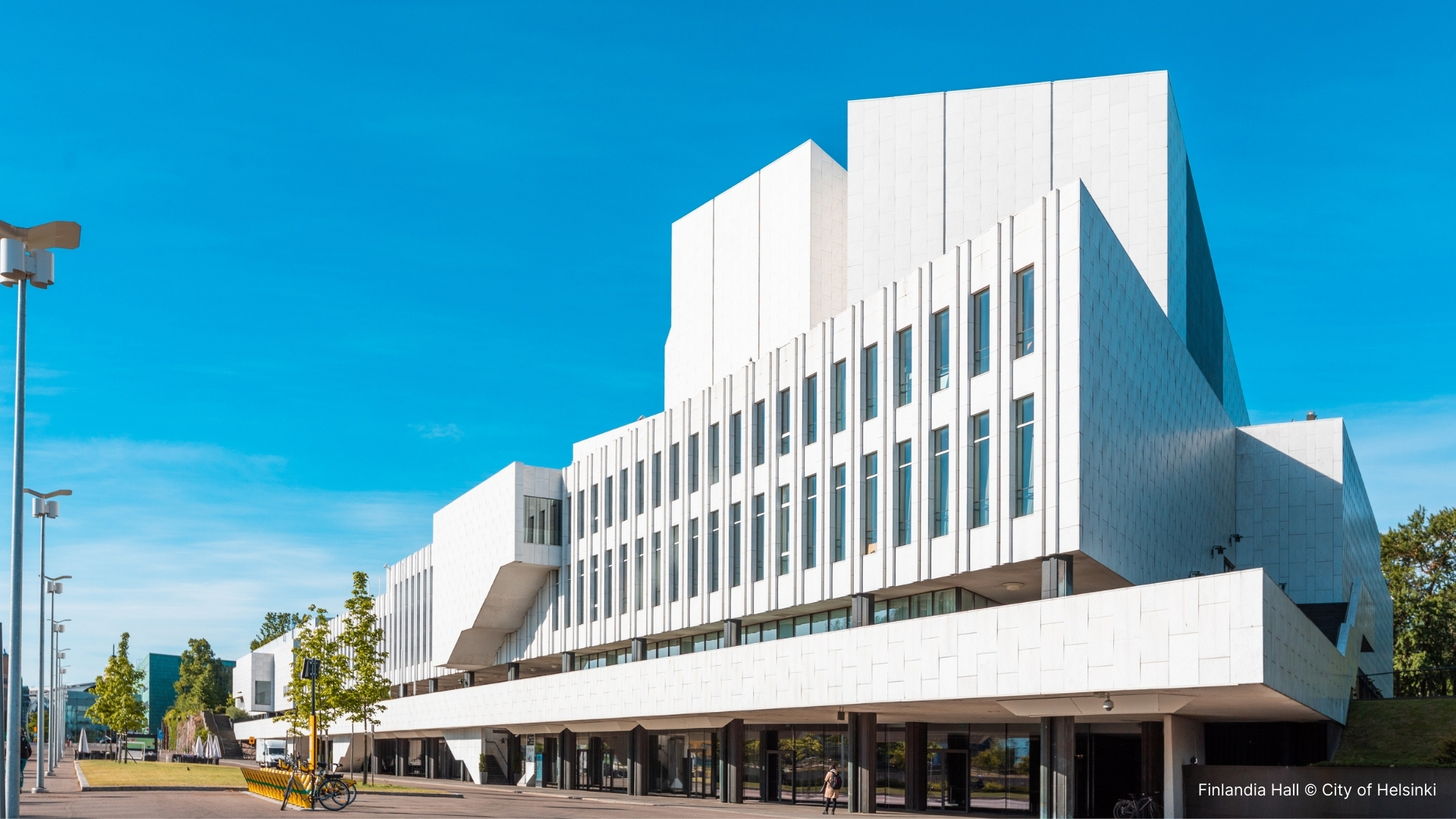

Skanska is modernizing Finlandia Hall, a Finnish cultural icon, to meet modern standards in areas such as energy efficiency and accessibility
Some old buildings just can’t be knocked down, even if you could replace them with buildings that over their lifetime might be more energy efficient. Finlandia Hall is an icon, a priceless piece of Finland’s cultural heritage. Despite its age and low energy efficiency, there was only ever one option: a meticulous renovation that brings it up to modern standards.
Renovation projects like this do not come around very often. Working with a building of such significance meant that we needed to gather a diverse team with a wide range of expertise. It demanded respect for our cultural heritage and incredible attention to detail.
A cultural icon
Designed by Finland’s most famous architect, Alvar Aalto, the building was completed in 1971. Located in central Helsinki, its various spaces host thousands of people at international summits, concerts and other events. It has become one of Finland’s most loved and iconic buildings, a part of our cultural identity. It even featured on one of our banknotes. But with no significant renovation having taken place since it was built, the building was in need of extensive refurbishment.
Finlandia Hall is owned by the City of Helsinki, and following a tough competitive tender process, they asked us to undertake a major refurbishment of the 24,100 square meter building. Work began in 2022 and is due to finish later this year.
A key aspect of the project has been to modernize the building in areas such as energy efficiency and accessibility. These were not high priorities in Aalto’s day. But another key aspect has been to preserve the building’s heritage and ensure that it looks just the same as it did before the renovation. These were requirements under the various historic building protections.
Refurbished, retrofitted and renewed
Our work has involved refurbishing, retrofitting or renewing everything inside the building. Only the concrete frame has been left untouched. We have repaired roofs and renewed façades, installing modern insulation in the process. We have upgraded HVAC (heating, ventilation and air conditioning) and other building systems, which in the case of heating alone has reduced energy consumption by about 30 percent. We have installed new elevators and created many new wheelchair-accessible areas.
Alvar Aalto also famously designed lights. And at Finlandia Hall we have preserved over 3,000 original lighting fixtures, while modernizing the electrics and installing energy efficient LED lighting technology.
Throughout the whole project we have focused on circularity. We have taken many materials out of the building, fixed them, cleaned them and put them back. We have refurbished things like doors, windows and skirting boards. And we have sent old materials, such as copper from the roofs and marble from the walls, for recycling and reuse.
Getting under the surface
All of this has been done under the watchful eye of the Finnish Heritage Agency and the Alvar Aalto Foundation, who visit the site weekly to ensure that that every refurbished component looks like it did originally. We have essentially modernized everything under the surface. And this has been a challenge made possible by assembling a large design team and using laser scanning to model the building and create digital twins.
These digital twins allowed the designers to solve the many problems of working with existing spaces which we were not allowed to alter, including for example the low ceilings, before reconstruction began. This work saved a lot of time and resources on site. It also earned us a 2023 World of Digital Built Environment award in the Most Innovative Digital Project Delivery category.
It looks just the same
While we can rarely make an old building as energy efficient as a new construction, we have modernized Finlandia Hall to a very high standard. The energy consumption is much lower and it is far more accessible.
Preserving Finlandia Hall is an essential project that everyone on the team feels honored to be working with. It has been challenging, but we are doing it well. And when the concert hall reopens, we will know we have got things exactly right if the thousands of people who enjoy the building say it looks just the same as it did before.
Related links and podcasts
To Build or to Rebuild, that is the Question
